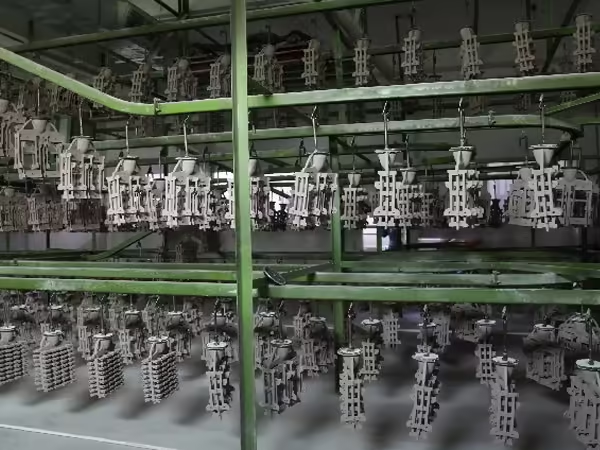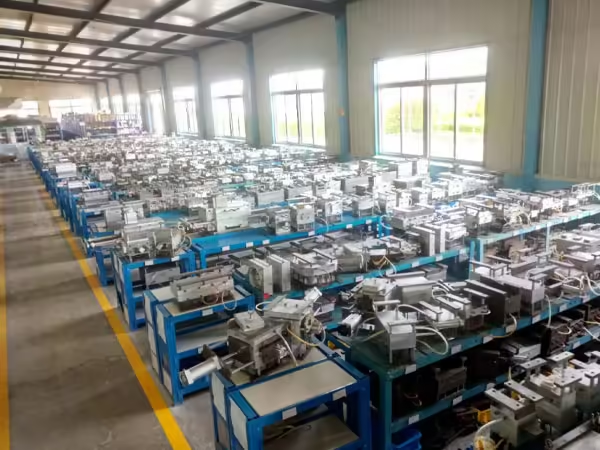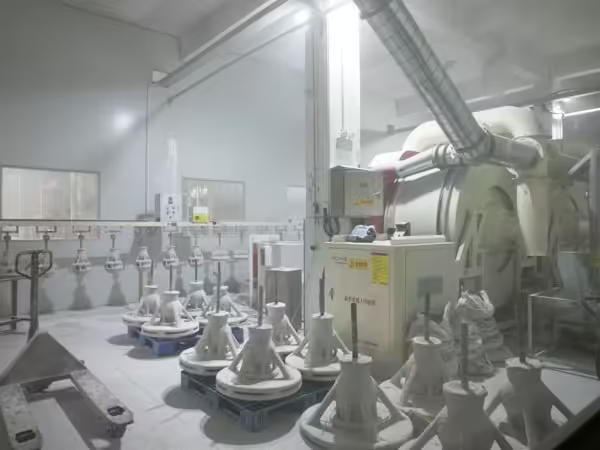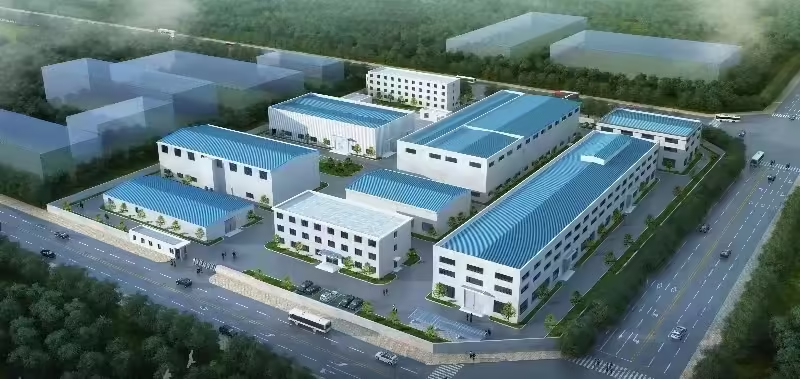10 Proven Ways Surface Quality Improves Investment Castings
Table of Contents
Introduction

In the world of manufacturing and engineering, investment castings have become a critical solution for producing complex, high-performance components. Buyers across industries such as aerospace, automotive, medical, and energy demand not only dimensional accuracy but also consistent surface quality. While much attention is often placed on alloy selection, tolerance, and machining capabilities, the surface quality of investment castings is equally important. It directly influences performance, downstream processing costs, and the long-term durability of parts.
This article explores ten proven ways surface quality improves investment castings, drawing on recognized standards, production processes, and buyer-focused insights. By the end, you will understand how surface quality impacts cost efficiency, functional performance, and overall competitiveness in demanding markets.
Why Surface Quality Matters in Investment Castings

Surface quality is not merely an aesthetic feature but a technical parameter that defines how effectively a component performs. Poor finishes can introduce stress points, increase friction, or require costly secondary machining. A smoother finish, on the other hand, reduces drag, ensures better wear resistance, and minimizes post-production treatment. For buyers, this directly translates into lower total cost of ownership and fewer performance risks.
International Standards for Surface Quality in Investment Castings
Industry standards play a central role in establishing expectations for surface quality. International organizations such as ISO, ASTM, and SAE provide parameters for acceptable roughness levels. Buyers frequently evaluate castings based on Ra values, which represent average surface roughness.
Common Standards Include:
- ISO 1302: Defines surface texture and methods of measurement.
- ASTM A802: Specifies surface roughness grades for steel castings.
- SAE AMS 2175: Used widely in aerospace castings for visual and surface defect acceptance.
For investment castings, these standards create a shared language between suppliers and buyers, ensuring that contractual agreements on surface quality are measurable and enforceable.
How Wax Patterns Affect Surface Quality in Investment Castings
The journey to achieving high surface quality begins with the wax pattern. Since investment casting is essentially a process of duplicating the wax model into metal, any imperfection in the pattern is transferred to the final product.
Smooth, defect-free wax models create the foundation for high-quality surfaces. Factors such as wax injection pressure, die temperature, and cooling rates directly influence the surface detail. Modern pattern production techniques, including 3D-printed patterns, provide greater consistency and minimize surface blemishes, ultimately reducing finishing operations later.
The Role of Ceramic Shells in Achieving Smooth Surfaces
Ceramic shells are another critical factor in determining surface outcomes. The shell material must be finely graded to replicate surface details accurately while resisting cracking during metal pouring. High-quality shell construction eliminates surface inclusions and enhances the reproduction of complex geometries.
Shells with controlled permeability and uniform coating thickness also promote even solidification, which further reduces surface irregularities. For buyers in high-precision industries, specifying shell quality is an effective way to guarantee surface excellence.
Surface Defects Commonly Found in Investment Castings

While investment casting delivers superior precision, it is not immune to surface defects. Common issues include:
- Burn-on defects caused by reaction between metal and mold material.
- Gas porosity leading to small pits or holes on the surface.
- Mold erosion that produces unwanted roughness.
- Incomplete fusion causing uneven surfaces or cold shuts.
Identifying these defects early ensures corrective action can be taken without passing unnecessary costs to buyers. Regular inspections and advanced quality control techniques help manufacturers deliver reliable surface finishes.
Benefits of Good Surface Quality in Investment Castings
Improved Wear Resistance
Smoother surfaces reduce friction and wear during operation. For automotive and aerospace parts subjected to repeated contact or high stress, this directly improves component lifespan.
Reduced Post-Machining Costs
Investment castings with excellent finishes require less grinding, polishing, or machining. This saves buyers money, shortens lead times, and reduces waste.
Enhanced Corrosion Resistance
Surface irregularities often act as initiation points for corrosion. A well-finished casting resists environmental factors better, extending service life in demanding conditions.
Better Aesthetics and Market Value
In industries where appearance matters—such as consumer hardware or medical devices—a premium surface finish increases perceived value and market competitiveness.
Comparison of Surface Finish Levels in Investment Castings
| Surface Quality Level | Average Ra (µm) | Typical Application Areas | Buyer Impact |
|---|---|---|---|
| Standard Finish | 6.3 – 12.5 | General machinery parts | Adequate but may need machining |
| Improved Finish | 3.2 – 6.3 | Automotive & energy parts | Reduces machining, improves wear |
| Premium Finish | 1.6 – 3.2 | Aerospace & medical parts | High performance, cost efficiency |
| Ultra-Precision Finish | <1.6 | Defense & surgical tools | Maximum durability, aesthetics |
This table highlights how surface quality levels align with functional performance and industry demands. Buyers can use this as a quick reference when specifying requirements in contracts or technical documents.
Cost-Benefit Analysis of Investing in High Surface Quality
While premium surface finishes may raise initial production costs, they often reduce long-term expenses. Fewer machining steps, lower scrap rates, and improved durability all contribute to lifecycle savings.
For example, a buyer may pay 5–10% more for castings with premium finishes, but avoid subsequent rework or downtime costs that could exceed this margin several times over. Viewed holistically, investment in superior finishes enhances total project economics.
Surface Quality Requirements in Aerospace Investment Castings
The aerospace sector demands uncompromising standards. Turbine blades, engine parts, and structural components require finishes that minimize turbulence, withstand high stress, and resist oxidation. For these parts, even slight surface imperfections can lead to catastrophic failures.
Aerospace buyers frequently specify tight Ra ranges and require full documentation of measurement results. Here, surface quality directly translates into safety, regulatory compliance, and long-term performance.
Advances in Ceramic Shell Coatings for Better Finish
Recent innovations in shell technology are further advancing surface quality. Coatings with nanoparticle additives, for example, enhance smoothness and reduce reactions between molten metal and shell surfaces.
For buyers, this innovation means access to castings with unprecedented accuracy, reducing reliance on secondary machining. Industries adopting these technologies gain a competitive edge by delivering parts that are ready for assembly with minimal post-processing.
How to Compare Surface Quality Between Suppliers

When evaluating suppliers, buyers should not only request Ra values but also review consistency across batches. Key questions to ask include:
- What measurement methods are used to verify surface finish?
- How frequently is quality checked during production?
- What is the historical rejection rate for surface defects?
By using these benchmarks, buyers can select partners capable of consistently meeting surface expectations. Supplier audits and sample inspections further strengthen confidence in sourcing decisions.
Eco-Friendly Methods to Improve Surface Quality
Sustainability is gaining prominence, even in casting operations. Eco-friendly techniques such as recyclable ceramic materials, low-emission wax systems, and energy-efficient polishing methods are now being integrated.
Buyers benefit by aligning procurement strategies with environmental regulations and corporate sustainability goals, without sacrificing quality.
Conclusion
Surface quality is a decisive factor in the performance, cost, and competitiveness of investment castings. From improved wear resistance to reduced machining needs and enhanced corrosion resistance, superior finishes provide measurable benefits. By understanding international standards, evaluating process controls, and collaborating with suppliers, buyers can secure castings that deliver long-term value.
In a global marketplace where precision and efficiency matter more than ever, investment in surface quality is not optional—it is essential.
FAQ
Q1. What is the typical surface roughness for investment castings?
Most investment castings achieve Ra values between 3.2 and 6.3 µm, though aerospace and medical industries often demand <1.6 µm.
Q2. Does better surface quality always mean higher cost?
Not necessarily. While premium finishes may raise upfront prices, they reduce machining, scrap, and downtime, often lowering total cost of ownership.
Q3. How can buyers verify surface quality?
Buyers can request surface roughness test reports, conduct independent inspections, or use tools like profilometers for precise measurements.
Q4. What industries benefit most from superior finishes?
Aerospace, medical, defense, and automotive sectors rely heavily on premium finishes to ensure safety, efficiency, and aesthetics.
Q5. What role does alloy selection play in surface quality?
Different alloys react differently to molds and finishing processes. Choosing the right alloy enhances smoothness and minimizes post-processing.
Stay Connected with Us

Thank you for reading! We hope this blog provided you with valuable insights and inspiration on acoustic panel ceilings. If you enjoyed the content and want to stay updated with the latest trends, tips, and behind-the-scenes updates, we’d love to connect with you on social media.
📘 Follow us on Facebook: Shanghai Leierwo Industry Trade Co., Ltd.
Join our growing community where we share expert advice, product highlights, and interactive discussions with professionals and design enthusiasts from around the world.
Let’s keep the conversation going—see you there!
Product Categories
- Valve Parts
- Water Pump Parts
- Bearing Box Parts
- Die Casting Parts
- Stainless Steel Pump Products
- Cast Iron Pump Products
- Valve Parts For Automobile Use
- Auto Parts
- Valve Parts For Civil Use
- Vacuum Pump Parts KF

